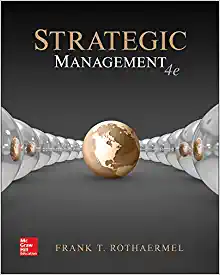Most of us participate in one or more popular social networks online such as Facebook, LinkedIn, Pinterest,
Question:
Most of us participate in one or more popular social networks online such as Facebook, LinkedIn, Pinterest, Snapchat, or Twitter. While many of us spend countless hours in these social networks, you may not have given a lot of thought to your network strategy. Social networks describe the relationships or ties between individuals linked to one another. An important element of social networks is the different strengths of ties between individuals. Some ties between two people in a network may be very strong (e.g., soul mates or best friends), while others are weak (mere acquaintances—“I talk to her briefly in the cafeteria at work”). As a member of a social network, you have access to social capital, which is derived from the connections within and between social networks. It is a function of whom you know, and what advantages you can create through those connections. Social capital is an important concept in business. Remember the old adage: What matters is not what you know, but whom you know. Some Facebook users claim to have 2,000 or more “friends.” With larger networks, one expects to have greater social capital, right? Though this seems obvious, academic research suggests that humans have the brain capacity to maintain a functional network of only about 150 people. This so-called Dunbar number was derived by extrapolating from the brain sizes and social networks of primates. Far-fetched? Not necessarily. You may have a lot more than 150 friends on Facebook or connections on LinkedIn, but researchers call that number the social core of any network. Why is this the case? Even though it takes only a split second to accept a new request on Facebook or LinkedIn, relationships still need to be groomed. To develop a meaningful relationship, you need to spend some time with this new connection, even in cyberspace. Social networking sites allow users to broadcast their lives and to passively keep track of more people. They enlarge their social networks, even though many of those ties tend to be weak. It may come as a surprise, however, to learn that research shows new opportunities such as job offers tend to come from weak ties, because it is these weak ties that allow you to access nonredundant and novel information. This phenomenon is called strength of weak ties. So, in thinking about how to leverage your social capital more fully as part of your career network strategy, rather than always communicating with the same people, it may pay for you to invest a bit more time in grooming your weak ties.
1. Create a list of up to 12 people at your university (or work environment if applicable) with whom you regularly communicate (in person, electronically, or both). Draw your network (place names or initials next to each node), and connect every node where people communicate with also talk to one another (i.e., indicate friends of friends). Can you identify strong and weak ties in your network?
2. Now compare your actual career-related network using a site such as LinkedIn. Are any of your connections linked together? With how many alumni from your university are you linked? These alumni can provide a source of weak ties that may help you get a foot in the door at a potential new employer if you leverage them effectively.
Step by Step Answer:






